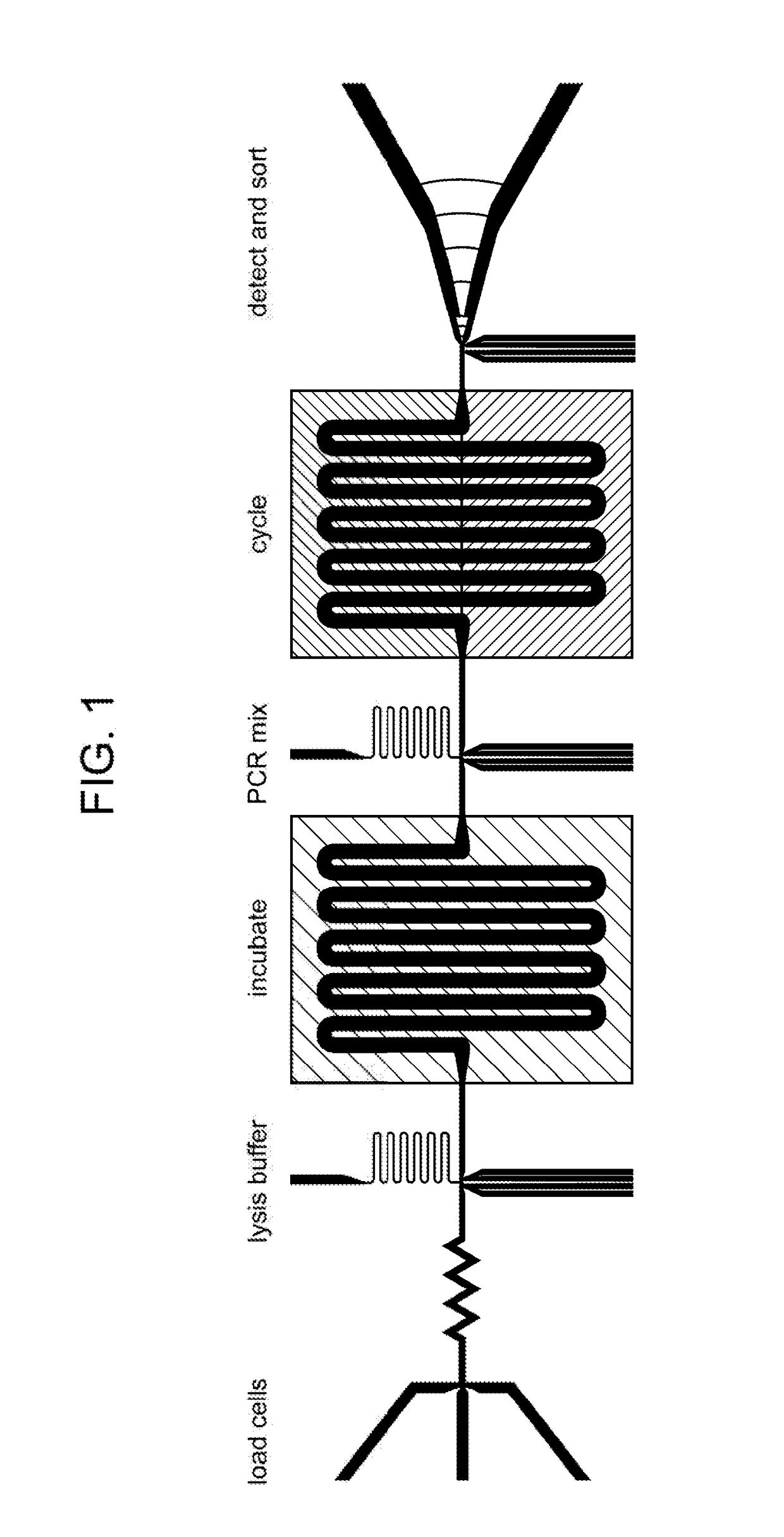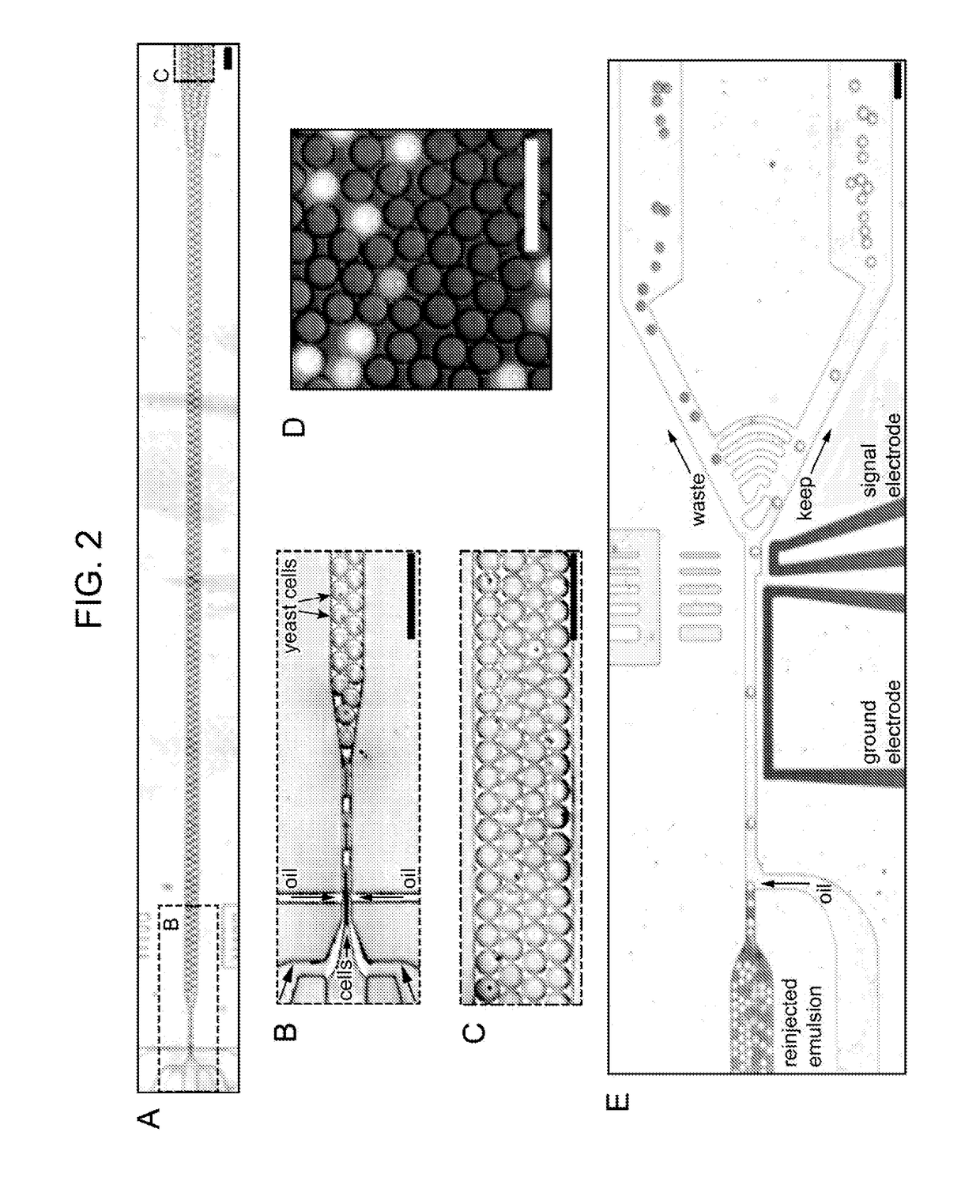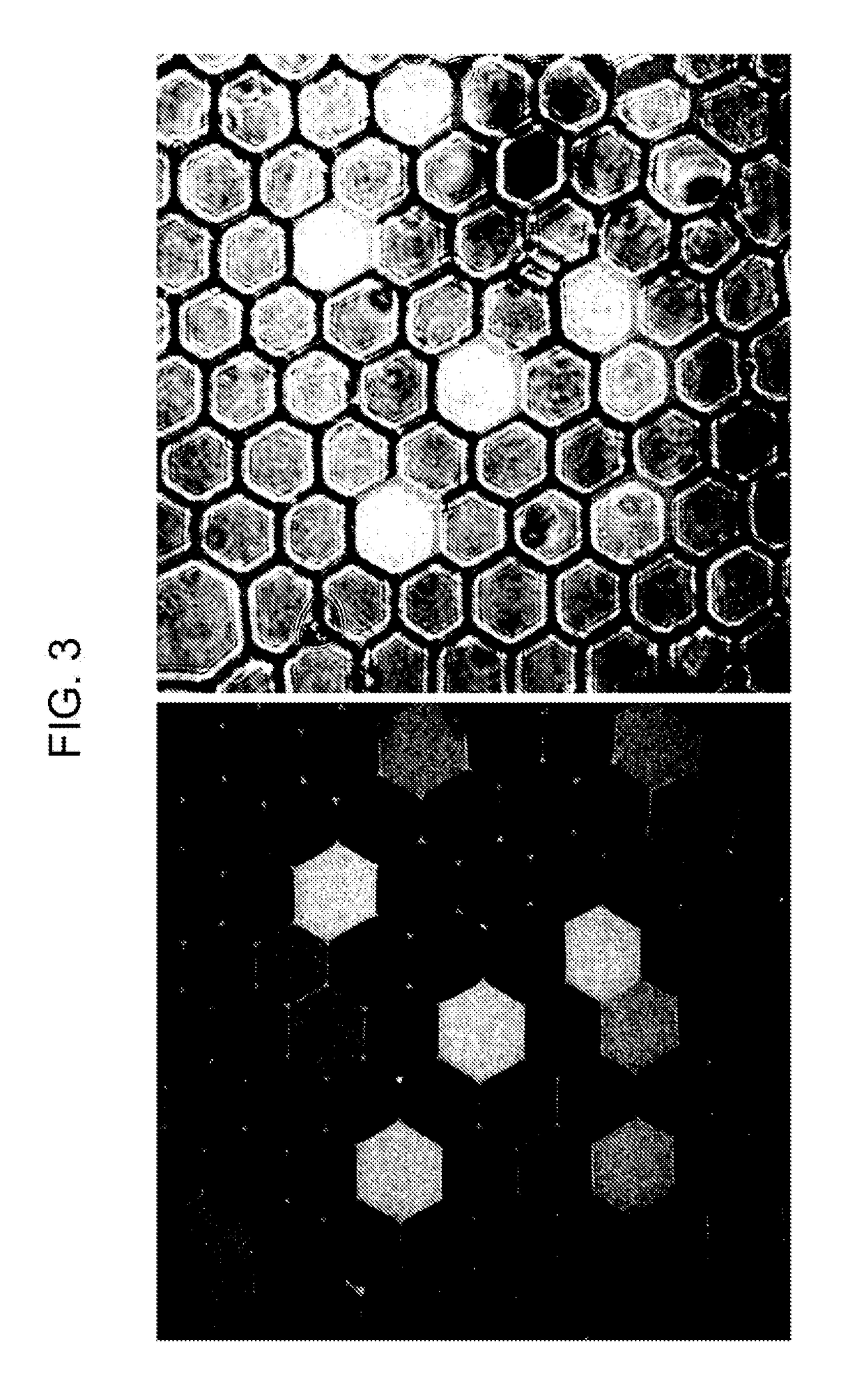PCR-Activated Sorting (PAS)
a sorting and activated technology, applied in the field of pcr-activated sorting (pas), can solve the problems of difficult and often hampered process, direct study of the system through sequencing of all nucleic acids, and difficult to study the genetics of individual microorganisms
- Summary
- Abstract
- Description
- Claims
- Application Information
AI Technical Summary
Benefits of technology
Problems solved by technology
Method used
Image
Examples
example 1
dic System for Performing Single-Cell PCR Reactions
[0274]Device Manufacturing:
[0275]The chips were made using the same photolithographic processes in polydimethylsiloxane as the other devices described above. A general schematic of the chips is shown in FIG. 1. The general approach carried out by such chips is depicted in FIG. 6.
[0276]Sample Preparation:
[0277]5-25 mL whole blood samples were extracted from a subject via syringe. Nucleated cells were separated using on-chip pinched-flow fractionation, as generally described in Lab on a Chip, 2005, 5, 778-784; the disclosure of which is incorporated herein by reference. Nucleated cells were collected for subsequent analysis.
[0278]PCR Reactions:
[0279]The assay requires the execution of an RT-PCR reaction in drops containing concentrated cell lysates; however, cell lysates inhibit RT-PCR (FIG. 7). To overcome this inhibition, a protocol has been developed that utilizes proteinase K to digest inhibitory proteins in cell lysates. Using pr...
example 2
ive Multiplexed Assay
[0282]To screen more than one gene simultaneously, a multiplexed qPCR reaction may be utilized. Reactions were initially performed in bulk with PCR tubes to optimize reaction conditions. Using these methods, successful multiplexing was achieved during digital droplet RT-PCR for three TaqMan® probes, EpCAM, CD44 and CD45. An example of this multiplexing is shown in FIG. 11, where EpCAM and CD44 probes were multiplexed in drops containing both target transcripts. All PCR primer sets were designed to span large introns, making these larger genomic PCR products highly unlikely in multiplex reactions. Additionally, all TaqMan® probes are designed to hybridize to exon-exon junctions. The current probe sets do not recognize gDNA.
[0283]Single-Cell qPCR with Megadroplet Arrays:
[0284]To perform qPCR analysis on single cells, the drops are imaged as they are thermal cycled. This requires that the drops be held at fixed positions during thermal cycling so they can be repeat...
example 3
-Free Picoinjection of Drops of Microfluidic Drops
[0287]Microfluidic devices were fabricated in poly(dimethylsiloxane) (PDMS) using soft photolithographic techniques. The devices had channel heights of 30 μm, optimal for the picoinjection of water-in-oil droplets that are 50 μm in diameter. The device design is similar to those described previously by Abate, et al. Proc. Natl. Acad. Sci. U.S.A., 2010, 107, 19163; the disclosure of which is incorporated herein by reference. An important difference, however, is that the channels for the metal solder electrodes are removed. Further, a “Faraday Mote”—an empty channel filled with a conducting aqueous solution—is implemented that runs between the injection site and the droplet spacer, as shown in FIG. 15, Panel B. The mote electrically isolates re-injected drops upstream of the picoinjection site from electric fields emanating from the picoinjector, preventing unintended merging. The emulsion that was picoinjected consists of monodisperse...
PUM
| Property | Measurement | Unit |
|---|---|---|
| internal volume | aaaaa | aaaaa |
| internal volume | aaaaa | aaaaa |
| internal volume | aaaaa | aaaaa |
Abstract
Description
Claims
Application Information
 Login to View More
Login to View More - R&D
- Intellectual Property
- Life Sciences
- Materials
- Tech Scout
- Unparalleled Data Quality
- Higher Quality Content
- 60% Fewer Hallucinations
Browse by: Latest US Patents, China's latest patents, Technical Efficacy Thesaurus, Application Domain, Technology Topic, Popular Technical Reports.
© 2025 PatSnap. All rights reserved.Legal|Privacy policy|Modern Slavery Act Transparency Statement|Sitemap|About US| Contact US: help@patsnap.com



